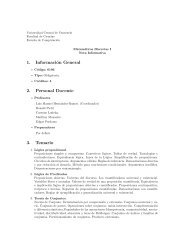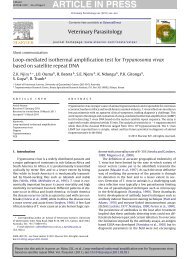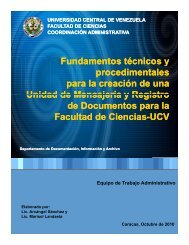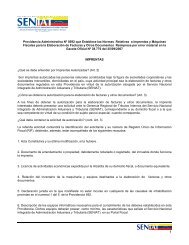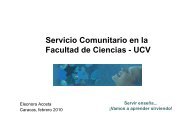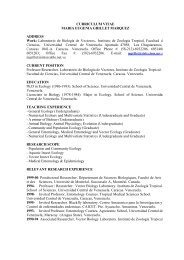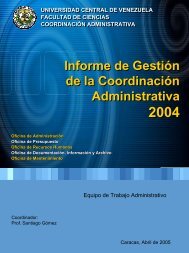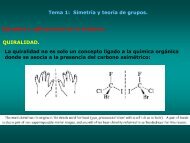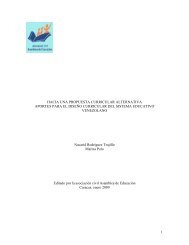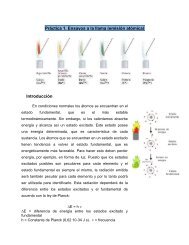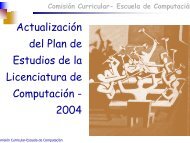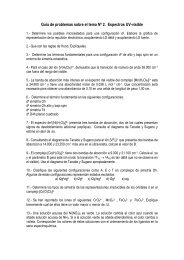Collecting and Preserving
Collecting and Preserving
Collecting and Preserving
- No tags were found...
Create successful ePaper yourself
Turn your PDF publications into a flip-book with our unique Google optimized e-Paper software.
5.5 - Label DataThe indispensable data must answer the questions ofwhere, when, <strong>and</strong> who, in that order <strong>and</strong> as exactly asfeasible. Only the size of the label should limit the amountof data. This kind of data should be given as follows:(1) Locality. The collection locality should be givenin such a manner that it can be found on any good map.Latitude <strong>and</strong> longitude are preferred <strong>and</strong> should be asprecise are possible. With the advent of the GlobalPositioning System (GPS) it is now possible, for a smallamount of money, to buy h<strong>and</strong> held devices that will readoff the latitude <strong>and</strong> longitude to within a few hundred feet.In addition, if the place is not an officially named locality,it should be given in terms of approximate direction <strong>and</strong>distance from such a locality. The Smithsonian Institution(U.S. National Museum) recommends that for localities inthe United States <strong>and</strong> Canada, the name of the State orProvince be spelled in capital letters, such as ONTARIO,ALBERTA, MARYLAND, NEW YORK, <strong>and</strong> SO.CAROLINA. This method should also be used for foreigncountries, as ENGLAND, PAKISTAN, GERMANY(WEST), <strong>and</strong> SRI LANKA. Then, if at all feasible, thenext subordinate region should be cited in capitals <strong>and</strong>lowercase letters, such as counties <strong>and</strong> parishes in theUnited States <strong>and</strong> Canada <strong>and</strong> provinces elsewhere. Hereare a few examples, with a virgule (/) indicating the end ofa line: ARIZONA/CochiseCo./15kmNEPearce (=15 kmnortheast of Pearce); NEWFOUNDLAND/ HermitageDist./12kmWStAlbans; EGYPT Cairo/SuezRoad 38kmW/Suez;EGYPT Mud.-AI- /Tahrir22km/SWAbulMatamir; orEGYPT/Mud.-AI- Tahrir/30°05'E,30°15'N. Current twoletter abbreviations for States <strong>and</strong> zip codes should not beused because they are not self explanatory <strong>and</strong> may not bepermanent.Techniques <strong>and</strong> Tools(3) Collector. Spell the last name of the collector orcollectors, using initials for given names if space permits.If the last name is a common one, such as Smith, Jones, orWilliams, always include initials, <strong>and</strong> of a group withmore than three collectors, use the leader's name followedby et al.(4) Other Data. It is especially important to cite hostsof parasites <strong>and</strong> plant-feeding insects when known. Detailsof the habitat, such as elevation, ecological type, <strong>and</strong>conditions of collection, are all important <strong>and</strong> are usuallyput on a label in addition to the primary data. Such data are"swept from Salsola kali," "Malaise trap", "reared exhuman feces," "McPhail trap in orange grove," "at light,""3,200 m," "s<strong>and</strong>y beach," <strong>and</strong> "under bark dead Populusdeltoides." Do not use vernacular names of hosts unlessthe host is common <strong>and</strong> widespread, such as orange orhorse. If the specific name of a host is not known, at leastgive the genus. "Vaccinium sp." is better than no name or"huckleberry." Even the family name of the host is helpfulif no more specific name is available. The presumed natureof the association between insect <strong>and</strong> plant should beclearly indicated, for example, "Resting on flowers ofVaccinium sp." The word "ex" (Latin for "out of") shouldmean that the insect was observed feeding on or in or wasbred from the mentioned plant.As noted earlier, it is advisable to keep a notebook,in which details of locality, habitat, <strong>and</strong> other importantdata are kept. However, the practice of assigning codenumbers to specimens or containers of specimens whichrefer back to field notes should be avoided. The use ofsuch codes, which can only be deciphered by reference tonotebooks, often results in collections which contain noother data than codes. Over time, the associated notebooksmay become lost or misplaced <strong>and</strong> as a result, the specimensbecome virtually useless.(2) Date. Cite day, month, <strong>and</strong> year in that order,preferably using the international convention of writingday <strong>and</strong> year in Arabic numerals <strong>and</strong> the month in Romannumerals without a line over <strong>and</strong> under the numerals. It isbest to place a period or short dash between each number,for example, 4.VII.1978 (=July 4, 1978), 5.V.1909, 5-V-1909. If a few consecutive days have been spent collectingin one locality but not more than a week, the extreme daysmay be cited, for example, 5-9.V.1909; or if 3 consecutivenights of light trapping were at one spot, the median daymay be cited, as 8.VI11.1984 for trapping done on thenights of the 7th to 9th of August 1984. For rearedspecimens, the dates of collection of the immature stages<strong>and</strong> of adult emergence should be cited, as pupa10.VI.1980, em.24.111.1981, indicating that the pupa wascollected on 10 June 1980 <strong>and</strong> the adult emerged on 24March 1981.5.6 - Placing the LabelsFor double-mounted insects, insert the pin throughthe center of the right side of the label (fig. 21b), with thelong axis of the label oriented in the same direction as thecard point. Use care that the pin is not inserted through,<strong>and</strong> thereby obscuring, the writing on the label. Forspecimens mounted by direct pinning, the label is centeredunder the specimen with the long axis of the label coincidingwith the long axis of the specimen. The left margin ofthe label is toward the head of the insect. An exception tothis is when specimens have the wings spread, such asLepidoptera. The label is always aligned transversely, atright angles to the axis of the body, with the upper margintoward the head. Labels may be moved up the pin to thedesired height by using a pinning block (fig. 18). Themiddle step of the block will give about the right height ifonly one label is used. When more than one label is used,47



